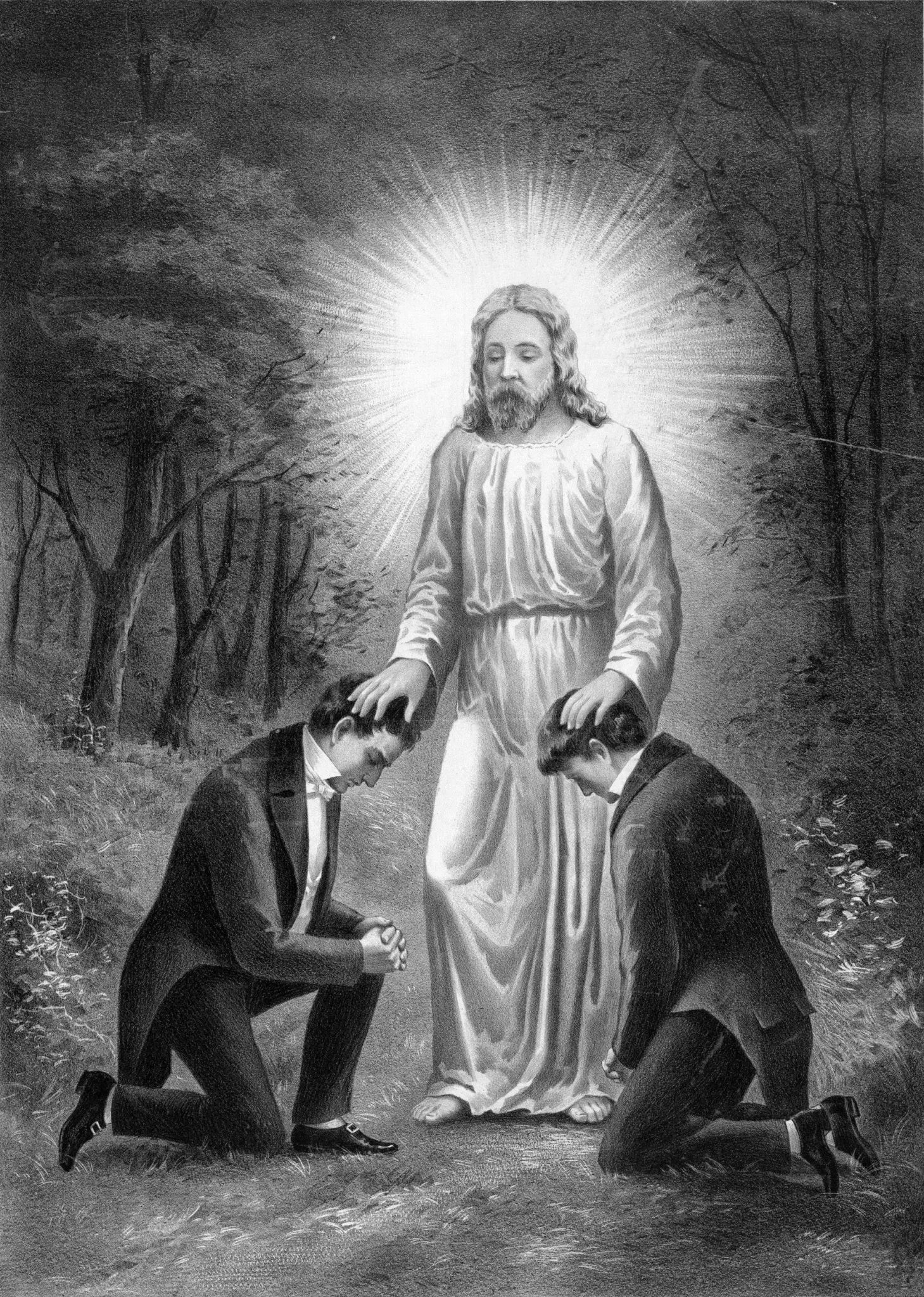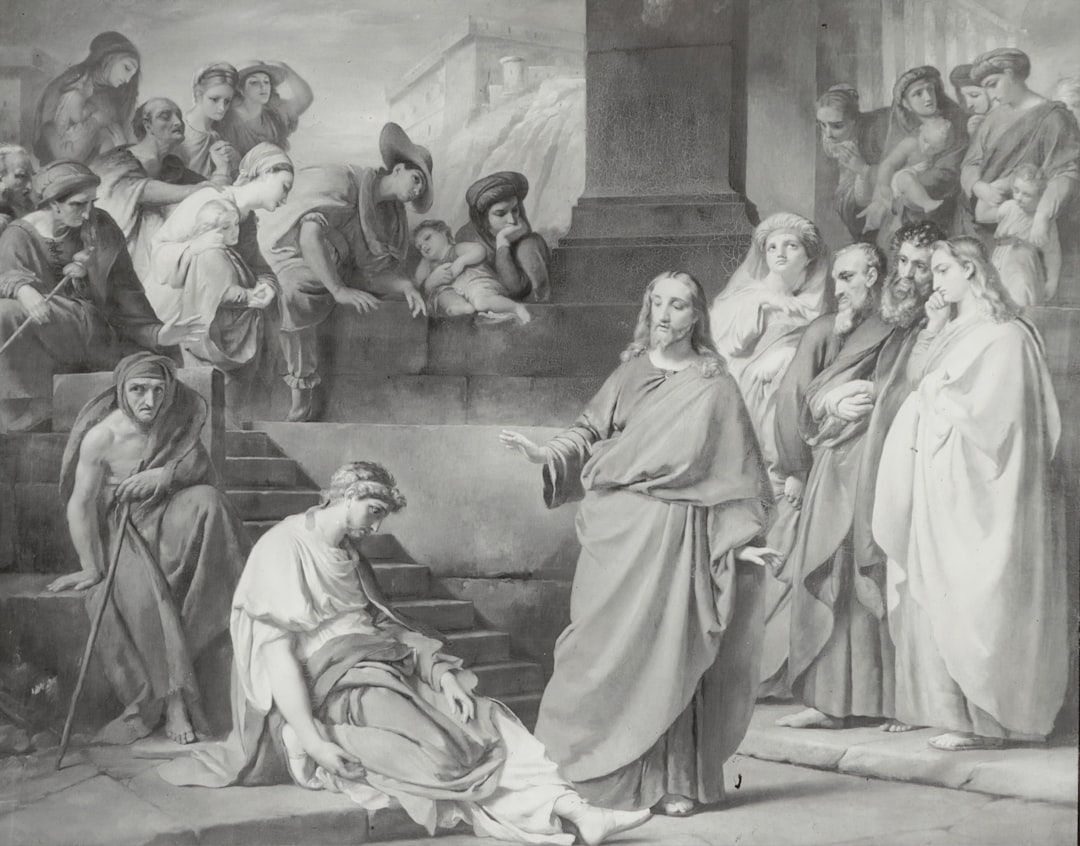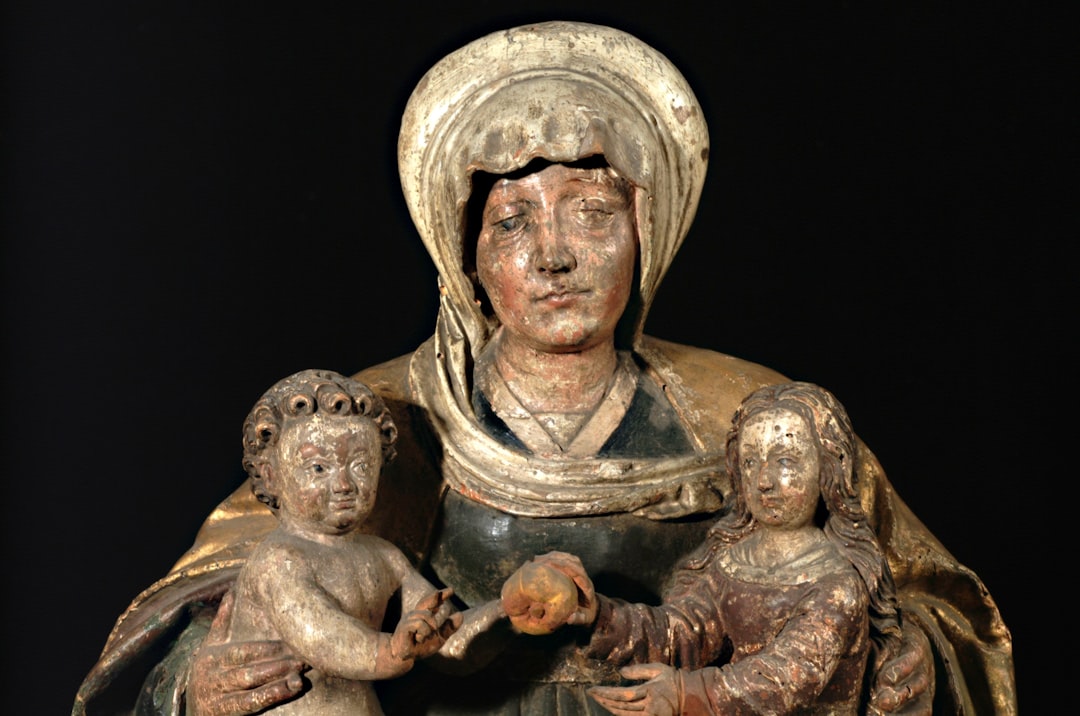Have you ever wondered about the origins and principles behind the Restoration Movement? This religious movement that emphasizes Christian unity and biblical authority emerged in the early 19th century and has since made a significant impact on modern Christianity. In this blog post, we will explore the history, principles, figures, and impact of this movement. Read on to learn more about the Restoration Movement.
Origins of the Restoration Movement

The Restoration Movement is a religious movement that aims to restore the unity and practices of the early Christian church outlined in the New Testament. The movement emerged in the early 19th century in the United States and was influenced by figures such as Alexander Campbell, Barton W. Stone, and Thomas Campbell.
Here are some key facts about the origins of the Restoration Movement:
- The movement arose at a time of significant religious upheaval in the US. Many Christian denominations were experiencing divisions and conflicts over matters of doctrine and practice, and the principles of the Restoration Movement sought to address these issues.
- Two key streams of thought contributed to the movement’s origins. The first was a desire to restore the practices of the early church described in the New Testament. The second was a belief in the need for Christian unity and a rejection of denominationalism.
- Among the leaders of the movement were Alexander Campbell and Thomas Campbell, both of whom had Presbyterian backgrounds. Barton W. Stone, another key figure, was a former Presbyterian minister who later became associated with the Christian Church (Disciples of Christ).
- The Campbells viewed the Bible as the authoritative source of Christian doctrine and rejected creeds and confessions as man-made traditions. They emphasized the importance of baptism by immersion and weekly observance of the Lord’s Supper.
- Stone’s emphasis on Christian unity was reflected in his slogan: “We are Christians only, but not the only Christians.” Stone believed that all Christians should be united under the banner of Christ, without regard for denominational labels.

Overall, the Restoration Movement was an attempt to re-establish Christianity as it was practiced in the first century, with a focus on biblical authority and Christian unity. The movement was not without controversy, however, and its impact on the wider Christian landscape varied over time. Nonetheless, it remains an important part of the history of Christianity in the US and around the world.
Principles of the Restoration Movement
The Restoration Movement aimed to restore the original practices of the Christian church as described in the New Testament. This movement began in the early 19th century in the United States and was based on the belief that religious practices had strayed from their original intent.
One of the core principles of the Restoration Movement is the idea of biblical restoration. This means that the movement sought to restore the original teachings and practices of the first-century church based on the New Testament. The movement believed that the church had become corrupt and that it was necessary to return to biblical teachings to achieve unity among Christians.
Another principle of the Restoration Movement is the rejection of denominationalism. The movement believed that denominations were divisive and that only a non-denominational approach could bring about Christian unity. This meant that the movement rejected any exclusively denominational practices or beliefs.
The idea of religious restoration is also a key principle of the Restoration Movement. The movement believed that it was necessary to return to the practices of the early church, which they saw as a model for how Christians should live and worship. This meant that they rejected any practices that were not explicitly described in the New Testament.
Biblical authority is another principle of the Restoration Movement. The movement believed that the Bible was the only authority for Christian practice and rejected any religious practices or teachings that were not based on the Bible. This principle led to a focus on the teachings of Jesus and the apostles, rather than the doctrines of any specific church or religious authority.
The idea of Christian practice was also central to the Restoration Movement. The movement believed that Christians should practice what they preached and that the church should be a model for Christian living. This meant that the movement placed a strong emphasis on ethical behavior and moral values.
In conclusion, the principles of the Restoration Movement aimed to restore the church to its original teachings and practices as described in the New Testament. This involved the rejection of denominationalism, a focus on biblical authority, a commitment to Christian practice, and a belief in religious restoration. Today, the impact of the Restoration Movement can be seen in modern non-denominational churches, such as the Church of Christ, that share many of the same principles.
Important Figures in the Restoration Movement
Throughout the course of history, there have been many important figures who have greatly impacted the Restoration Movement. These individuals served as leaders, scholars, and religious figures who were instrumental in the development and spread of the movement.
-
Alexander Campbell
Alexander Campbell is widely regarded as one of the most important figures in the Restoration Movement. Born in Ireland in 1788, Campbell immigrated to the United States in the early 19th century. In 1823, he founded the Christian Association of Washington, which was an organization that sought to promote Christian unity and eliminate denominational differences. Campbell was also a prolific writer, and his writings had a significant influence on the development of the Restoration Movement. -
Barton W. Stone
Barton W. Stone was another key leader in the Restoration Movement. Born in Maryland in 1772, Stone became a Presbyterian minister in Kentucky in the early 19th century. However, he eventually began to question some of the doctrines of the Presbyterian Church, and eventually broke away to join the Stone-Campbell Movement, which advocated for non-denominational Christianity. Stone was known for his powerful sermons and his ability to bring people together. -
Thomas Campbell
Thomas Campbell was the father of Alexander Campbell and was also an important figure in the Restoration Movement. Born in Ireland in 1763, Campbell immigrated to the United States in 1807. He was a Presbyterian minister who became disillusioned with denominationalism. In 1809, he published a document called the Declaration and Address, which outlined his vision for a restoration of the early church. This document had a major impact on the development of the Restoration Movement. -
Walter Scott
Walter Scott was a key figure in the spread of the Restoration Movement in the United States. Born in Scotland in 1796, Scott immigrated to the United States in 1818. He became a preacher in the early 1820s and quickly gained a reputation as a powerful speaker. He was known for his ability to communicate the core tenets of the Restoration Movement in a clear and concise way. He was also instrumental in establishing the first congregation of the Disciples of Christ in 1827. -
David Lipscomb
David Lipscomb was a prominent leader in the Restoration Movement in the late 19th and early 20th centuries. Born in Tennessee in 1831, Lipscomb was a prolific writer and editor. He played a key role in the formation of the Nashville Bible School, which later became Lipscomb University. Lipscomb was known for his commitment to Christian unity and his belief in the importance of the Bible as the final authority in matters of faith and practice.

As you can see, the Restoration Movement was greatly influenced by these important figures who played a significant role in its development. Each of these individuals contributed in their own unique way, but all shared a commitment to the principles of the Restoration Movement, including Christian unity, biblical authority, and a restoration of the practices of the first century church.
The Spread of the Restoration Movement
After its beginnings in the early 19th century, the Restoration Movement quickly gained momentum and spread throughout the United States and beyond. It is important to note that this movement did not begin as an organized denomination but rather as a call to restore the church to its early New Testament roots.
One of the primary reasons for the rapid spread of the Restoration Movement was the popularity of the message of unity that it presented. Alexander Campbell, one of the movement’s most prominent leaders, had a strong stance on the need for Christians to unify under the banner of Christ rather than dividing themselves into different denominations. This message resonated with many people, who were tired of the division and competition that often characterized Christianity at the time.
As the Restoration Movement grew, so did its impact on other denominations. Many Christians who had grown disillusioned with their own denominations were attracted to the message of unity and a return to the early church that the Restoration Movement espoused. This led to a significant influx of members into the movement and a growing influence on the religious landscape of the United States.
One of the key figures in the spread of the Restoration Movement was Barton W. Stone, who had a wide-ranging influence through his preaching and writing. Stone was a committed restorationist who believed that the church needed to return to its earliest teachings and practices. He and others like him were instrumental in laying the groundwork for the non-denominational Christian Church and the Church of Christ, both of which are still active today and remain closely tied to the principles of the Restoration Movement.
Another important factor in the spread of the Restoration Movement was the rise of the printing press. This technology allowed the movement’s leaders and supporters to distribute their writings and ideas much more widely than ever before. This, in turn, helped to promote the principles of the movement and attract new members who were looking for a fresh start and a return to more authentic Christian practice.
« Understanding the Significance of Drink Offerings in Biblical and Religious Traditions
Unveiling the Mystery: Who Really Are the 144000? »
Overall, the spread of the Restoration Movement was driven by many factors, including a message of Christian unity, the influence of key leaders like Alexander Campbell and Barton W. Stone, and the advent of new technologies like the printing press. Today, the legacy of the Restoration Movement lives on through a variety of denominations and churches that are committed to remaining true to the original teachings and practices of the early Christian church.
Key Tenets of the Restoration Movement
The Restoration Movement is a religious movement that started in the early 19th century in the United States. The movement aimed to restore Christian unity by going back to the principles of the early church as described in the New Testament. Here are some of the key tenets of the Restoration Movement:
-
Biblical Authority: The Restoration Movement emphasizes the authority of the Bible as the only source of religious doctrine. It encourages Christians to read and study the Bible for themselves to understand the teachings of Jesus and his disciples.
-
Christian Unity: The Restoration Movement seeks to bring all Christians together under the banner of Christ. It rejects denominationalism and sectarianism, instead advocating for a non-denominational approach to Christianity.
-
First Century Christianity: The Restoration Movement emphasizes the importance of modeling Christian practice on the first century church described in the New Testament. This includes practices such as baptism by immersion, weekly communion, and congregational singing.
-
Gospel Mission: The Restoration Movement places a strong emphasis on evangelism and mission work. It believes that Christians should actively seek to spread the gospel and make disciples of all nations.
-
Christian Living: The Restoration Movement encourages Christians to live out their faith in every aspect of their lives. This includes following biblical teachings on ethical and moral issues, as well as living a life of service and love to others.
-
Biblical Restoration: The Restoration Movement seeks to restore the practices and teachings of the early church that were lost or corrupted over time. This includes a return to the simplicity of Christian worship, a rejection of human traditions and innovations, and a focus on the essentials of Christian faith.
By emphasizing these key tenets, the Restoration Movement sought to create a more authentic and biblical expression of Christianity. Today, the movement has led to the creation of numerous non-denominational churches and the restorationist branch of Protestantism. It continues to influence contemporary Christian practice and is an important part of the religious landscape in the United States.

If you are interested in learning more about the Restoration Movement, check out our previous sections on the origins and principles of the movement, as well as some of its important figures.
The Impact of the Restoration Movement on Christian Denominations
The Restoration Movement, also known as the Stone-Campbell Movement, has had a significant impact on Christianity as a whole. The movement was born out of the desire to restore the early church as described in the New Testament, and this quest for restoration has had far-reaching effects.
One of the main tenets of the Restoration Movement was the belief in the importance of Christian unity. Proponents of the movement believed that the fragmentation of Christianity into various denominations was a serious problem and sought to reunite all Christians under the banner of a single, non-denominational Christian Church.
This belief in Christian unity led to a number of schisms and mergers within Christian denominations. Many new churches were formed based on the principles of the Restoration Movement, including the Church of Christ and the Christian Church.
The focus on biblical authority and Christian practice also had a profound impact on many Protestant denominations. The movement emphasized the need to follow the teachings of the Bible closely, and many churches that had strayed from these teachings found renewed vigor and purpose within the Restoration Movement.

The Restoration Movement also had an impact on the broader culture. The ideals of the movement, such as Christian unity and Biblical restoration, inspired many social reforms. For example, the movement played a significant role in the abolitionist and temperance movements in the 19th century.
Today, the principles of the Restoration Movement continue to inspire new generations of Christians. The quest for Christian unity is ongoing, and many churches still seek to unite under the banner of a single, non-denominational Christian Church. The importance of biblical authority and Christian practice also remains a key tenet of many Protestant denominations.
In conclusion, the Restoration Movement has had a lasting impact on Christianity. Its emphasis on Christian unity, biblical restoration, and Christian practice has inspired numerous changes within Christian denominations and the broader culture. The movement continues to inspire Christians around the world to seek out the principles and practices of the early church and strive for a greater sense of Christian unity.












